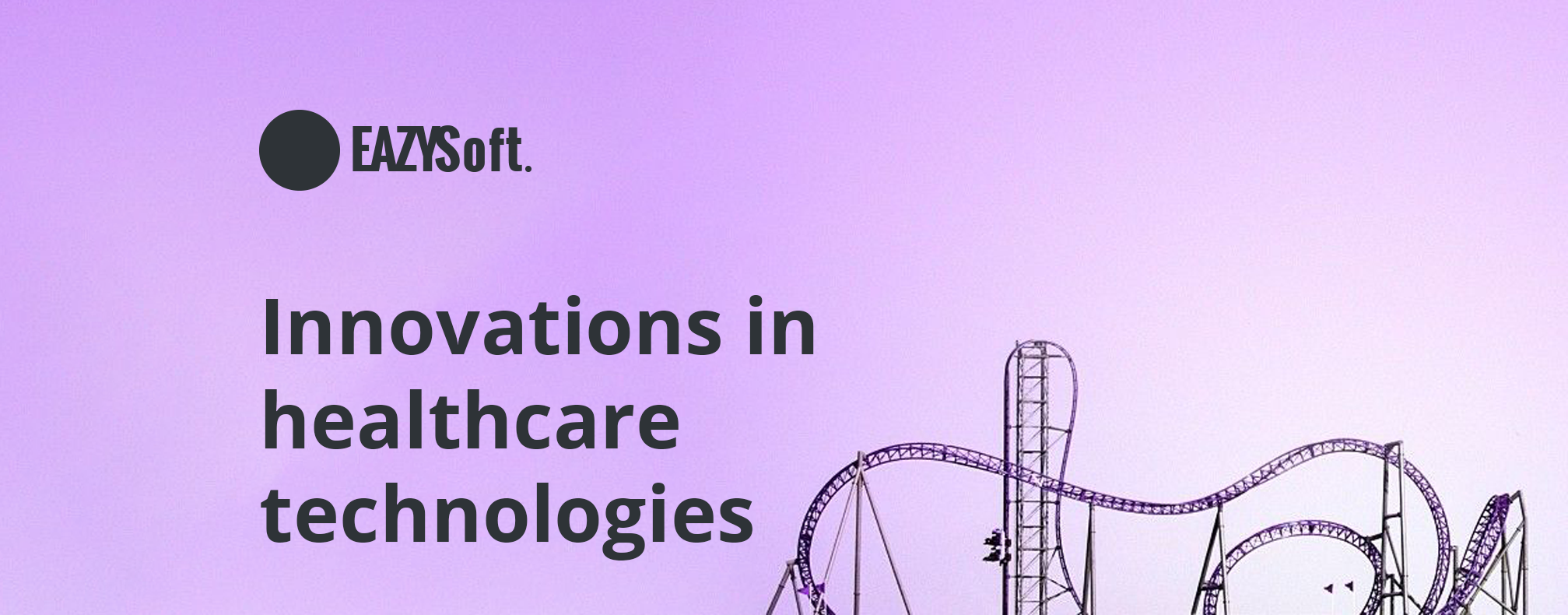
Innovations in healthcare technologies
Medicine of future becomes true. How AI, smart-devices and other modern technologies will improve the quality of healthcare?
Medical researches always were considered as a prospective area of development. Every year ideas from IT find their implementation in medical care. However, the speed of integration of modern technologies is pretty slow. Poor data quality and interoperability, doubts about privacy, and difficulties in integrating of new technologies in existing workflows are significantly slowed down the process of technology adoption. Nevertheless, providers who found ways to resolve this issues are getting the edge over their peers who are lagging behind.
Real-time health monitoring
Sometimes, effective treatment requires full control of health data monitored thoroughly around the clock. Wearable devices might provide such data in a comprehensive way to the doctors might set more precise diagnosis and effective treatment.
This feature is the most common for average users. For example – fitness trackers usually register common medical measurements – heartbeat rate, burned calories, sleeping cycles. Advanced devices might receive wider variety or more specific measurements: level of insulin for diabetics, monitoring for atrial fibrillation and many other measurements. Still this devices are small enough to be wearable – in counterweight of cumbersome apparatus, and dozens of wired sensors.
AI in medicine
Development of robots and Artificial Intelligence is far from perfect. Robot-assisting surgery is already performed for years but still too expensive to wide implementation. Instead AI require less specialized machinery and able to deal with wider variety of tasks, like advising, and assisting as in treatment, as in management..
Existing AI algorithms are already able to impact on managing processes and assist in simple occasions. AI might analyze, for example, the simple questionnaire in order to assist with first aid or orienting with proper provider or service. If it will have data about previous visits and treatment – assist will be more precise. Virtual care assistants would be available around the clock, so patients would always be able to receive help when needed.
Also, this system will eliminate the wait for patients who would otherwise have to rely on administrative staff for triage. AI algorithms might take into account users options and based on them propose the most fitting healthcare service.
Augmented reality
Two biggest purposes of Virtual\Augmented Reality are educational and aiding.
As for physicians – visualization allows them picking the correct treatment and aid in surgery. Students might visualize organs, injuries and practice in the treatment, increasing their skill. Surgery of any difficulty without any possible harm to the patient.
As for patients – this could be a demonstration in a physician’s office or demonstrating drugs information or correct implementation of medical instruments in store or at home. Augmented reality in medicine can help to cope with safety issues and decrease the inappropriate use of medicines.
Medicine is a wide field for scientific development, and technologies, mentioned above are not the only ones. Implementation and spreading of new technologies are expensive, slow and complicated. However, they illustrate the true power of modern medicine.
